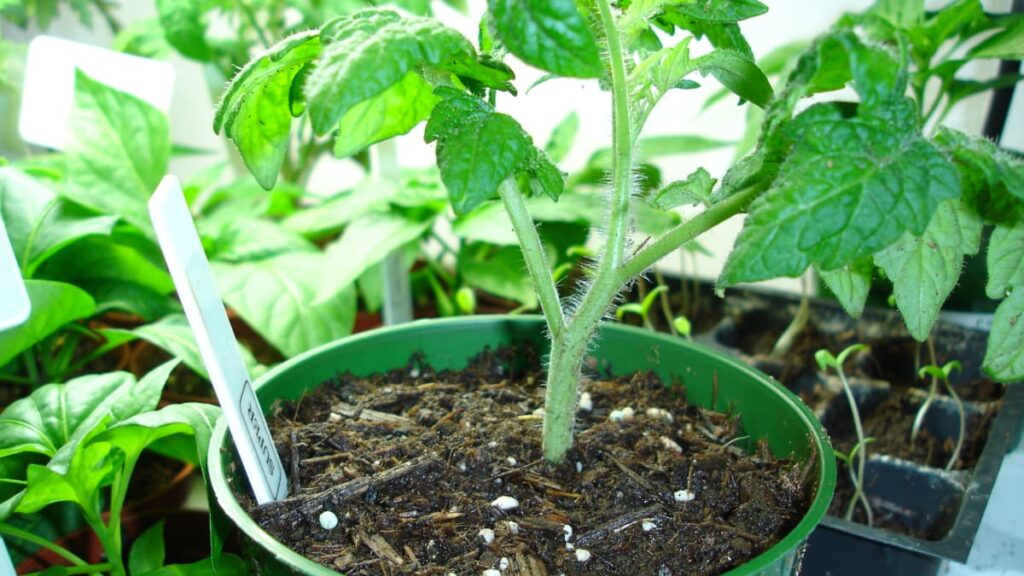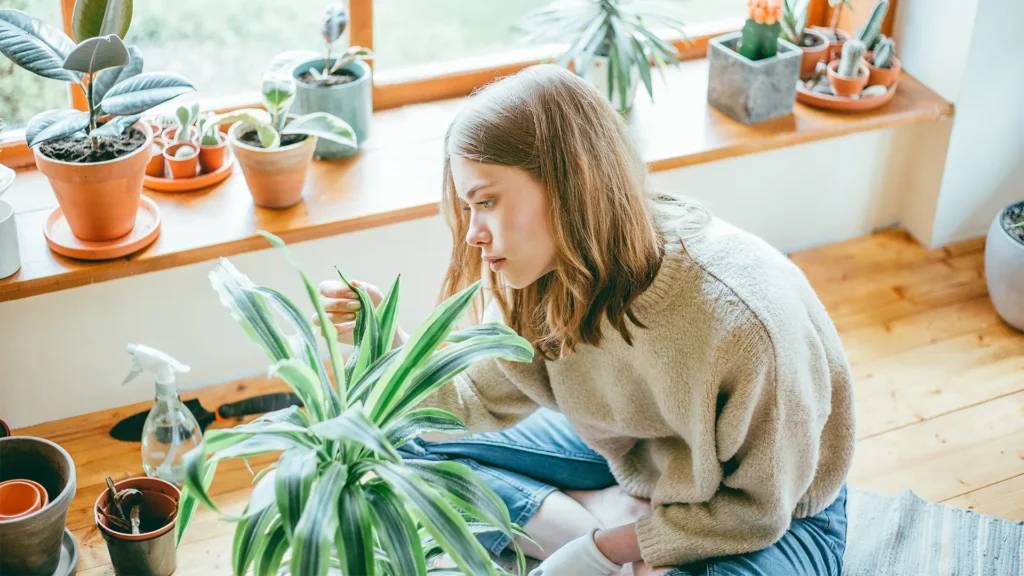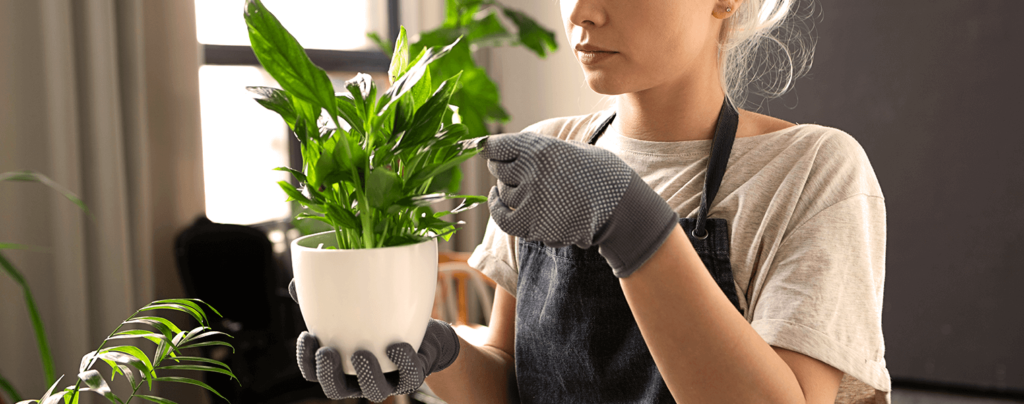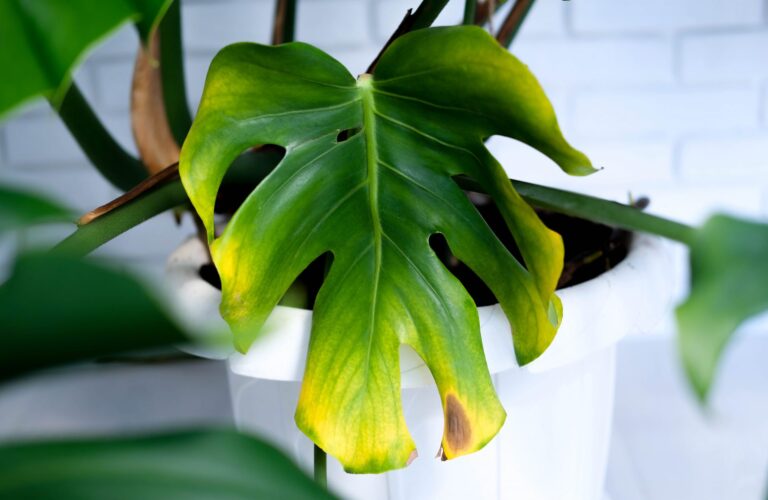Contents
Introduction
Have you ever noticed your once-lush green plant suddenly sporting a collection of yellow leaves? If so, you’re not alone. Yellowing leaves are a common issue that many plant lovers face, and they can be a sign that your plant isn’t feeling its best. But don’t worry—figuring out what’s going wrong and how to fix it doesn’t have to be a complicated process.
In this guide, we’re going to dive into the world of yellow leaves and what they really mean for your plants. Whether you’re a seasoned gardener or a newbie with just a few houseplants, understanding why leaves turn yellow is crucial for keeping your plants healthy and vibrant.
Why do plants get yellow leaves? There are a few main reasons, including nutrient deficiencies, watering problems, pests, and diseases. Each of these issues has its own set of symptoms, so identifying the cause can sometimes feel like solving a mystery. But don’t worry—we’ll break it all down for you in simple terms.
You’ll learn how to spot the signs of various problems, from too much or too little water to pesky bugs and lurking diseases. We’ll also cover easy solutions and preventative measures to help keep your plants in top shape.
So, if you’re ready to turn those yellow leaves back to green and give your plants the care they deserve, let’s get started! With a bit of knowledge and some handy tips, you’ll be on your way to thriving plants in no time.
Understanding Yellow Leaves
So, you’ve spotted those dreaded yellow leaves on your plants, and now you’re wondering, “What’s going on?” Yellowing leaves can be a bit alarming, but they’re actually quite common and can happen for a number of reasons. Let’s break down why your plant might be turning yellow and what it’s trying to tell you.
Nutrient Deficiencies
First up, let’s talk about nutrients. Plants need a variety of nutrients to stay healthy, and if they’re not getting what they need, they can start to show it. Think of it like a diet—if your plant’s missing key nutrients, it’s going to be hungry and unhappy.

- Nitrogen Deficiency: If your plant is looking a bit pale or the older leaves are turning yellow, it might be craving nitrogen. Nitrogen is essential for healthy leaf growth, so a lack of it can make your plant’s leaves lose their vibrant green color.
- Iron Deficiency: Yellowing leaves with green veins might mean your plant is low on iron. Iron helps with chlorophyll production, which keeps leaves green. Without enough iron, your plant’s leaves might look yellow and weak.
- Other Nutrient Imbalances: Calcium, magnesium, and potassium also play important roles. A lack of these nutrients can cause various yellowing patterns and other issues, so it’s worth checking if your plant needs a bit more balanced nutrition.
Watering Issues
Watering can be a bit of a balancing act. Too much or too little water can stress your plant out, leading to yellow leaves.
- Signs of Overwatering: If the yellowing starts at the bottom of the plant and the soil feels soggy, you might be overwatering. Roots that sit in too much water can start to rot, leading to yellowing leaves and other problems.
- Signs of Underwatering: On the flip side, if the soil is dry and the leaves are curling or crispy, your plant might be underwatered. Plants need consistent moisture to thrive, and too little can cause the leaves to turn yellow and fall off.
Pest Infestations
Pests are like uninvited guests that can cause quite a mess. Tiny critters like aphids, spider mites, and whiteflies can damage your plant and lead to yellowing leaves.

- Common Pests: Look out for small insects or webs on your plants. These pests suck sap from the leaves, which can weaken the plant and cause yellow spots or overall discoloration.
- Pest Detection and Management: Regularly check your plants for pests. If you spot any, you might need to take action with insecticidal soap, neem oil, or introduce beneficial insects that prey on the pests.
Disease and Fungal Infections
Sometimes, yellow leaves are a sign that your plant is dealing with diseases or fungal infections.
- Common Diseases: Issues like root rot or powdery mildew can cause leaves to turn yellow and eventually die. These problems often start from poor soil conditions or high humidity.
- Prevention and Treatment: Make sure your plant has good air circulation and isn’t sitting in soggy soil. If you spot disease symptoms, you might need to treat with fungicides or adjust your plant’s environment to help it recover.
Understanding why your plant’s leaves are turning yellow is the first step in getting it back to health. By identifying the cause—whether it’s a nutrient issue, watering problem, pests, or disease—you can take the right steps to fix it and keep your plant looking its best.
Diagnosing the Problem
Now that we’ve covered the basics of why leaves might be turning yellow, it’s time to dive into how to pinpoint the exact issue with your plant. Diagnosing the problem can feel a bit like being a detective, but with a few key observations and tests, you’ll be able to figure out what’s going on and how to fix it. Let’s break it down!
Checking for Nutrient Deficiencies
If you suspect your plant might be lacking essential nutrients, here’s how to check and what you can do about it:
- Nitrogen Deficiency: Look for older leaves that are turning yellow while the newer ones stay green. This could be a sign that your plant is low on nitrogen, which is crucial for healthy leaf growth. To fix this, consider using a balanced fertilizer or one specifically high in nitrogen.
- Iron Deficiency: If your plant’s leaves are yellowing but the veins remain green, iron deficiency might be the culprit. This usually affects newer leaves first. You can treat this by applying a chelated iron supplement to the soil or using a foliar spray.
- Other Nutrient Imbalances: Sometimes it’s not just one nutrient but a combination that’s off balance. If you’re unsure, a soil test can help you figure out which nutrients might be lacking. From there, you can choose a fertilizer that addresses the specific needs of your plant.
Assessing Watering Practices
Watering issues are a common cause of yellow leaves, so let’s see how to determine if your plant’s watering routine is to blame:
- Signs of Overwatering: Check if the soil feels soggy and the yellowing starts from the bottom up. Overwatered plants often have root rot, which can lead to yellow, mushy leaves. To fix this, allow the soil to dry out between waterings and ensure your pot has good drainage.
- Signs of Underwatering: If the soil feels dry and the leaves are curling or crispy, your plant might be thirsty. Yellowing from underwatering usually affects the older leaves first. Increase your watering frequency and make sure you’re giving enough water without letting it sit in the bottom of the pot.
Inspecting for Pests
Tiny pests can be hard to spot but are often the culprits behind yellowing leaves. Here’s how to check for and manage them:

- Common Pests: Look closely at the undersides of leaves and along stems for small insects or webs. Aphids, spider mites, and whiteflies are common offenders. They suck the sap from the plant, leading to yellow spots and overall discoloration.
- Pest Detection and Management: Regularly inspect your plants for signs of pests. If you find any, you might need to use insecticidal soap or neem oil to get rid of them. Introducing beneficial insects like ladybugs can also help keep pest populations in check.
Identifying Diseases and Fungal Infections
Diseases and fungi can cause yellowing leaves and other issues. Here’s how to identify and address these problems:
- Common Diseases: Look for symptoms like yellowing accompanied by spots, moldy patches, or rotting roots. Diseases like root rot and powdery mildew often start in unfavorable conditions like overly wet soil or high humidity.
- Prevention and Treatment: Ensure good air circulation around your plants and avoid overhead watering. If you notice signs of disease, treat them with appropriate fungicides and adjust your plant’s environment to prevent future outbreaks.
By carefully observing your plant and assessing these key areas, you can diagnose the problem causing those yellow leaves. Once you identify the issue, you’ll be well on your way to helping your plant recover and thrive.
Solutions and Preventative Measures
So, you’ve figured out why your plant’s leaves are turning yellow, and now you’re ready to take action. That’s great! Let’s talk about how you can fix the problem and keep your plants healthy and vibrant. Here’s a straightforward guide to solutions and preventative measures for yellowing leaves.
Improving Soil Health
Healthy soil is the foundation of a thriving plant. If your plant’s leaves are yellow, improving soil health can make a big difference.
- Soil Testing: Start with a soil test to check for nutrient imbalances and pH issues. Soil tests can tell you exactly what’s lacking in your soil so you can address it more effectively. You can find soil test kits at garden centers or online, or send a sample to a local extension service for analysis.
- Fertilization: Based on your soil test results, choose a fertilizer that matches your plant’s needs. If your plant is low on nitrogen, for example, a high-nitrogen fertilizer can help. Be sure to follow the instructions on the fertilizer package to avoid over-fertilizing, which can lead to other issues.
Optimizing Watering Practices
Getting your watering routine just right can help prevent yellow leaves and keep your plants happy.
- Watering Techniques: Different plants have different watering needs, so it’s important to know what’s right for yours. In general, water when the top inch of soil feels dry. Use a watering can or hose with good control to avoid splashing water on the leaves, which can sometimes lead to fungal issues.
- Drainage Solutions: Ensure your pots have proper drainage to prevent water from sitting at the bottom. If you’re growing in containers, make sure they have drainage holes. For garden beds, improve drainage by mixing in organic matter like compost.
Managing Pests
Keeping pests under control is crucial for plant health. Here’s how to manage and prevent pest issues:
- Natural Predators: Beneficial insects, like ladybugs and lacewings, can help keep pest populations in check. You can often find these beneficial bugs at garden centers or online. They’re a natural way to reduce pests without using harsh chemicals.
- Chemical and Organic Pesticides: If you have a pest infestation, you might need to use pesticides. Organic options like neem oil or insecticidal soap can be effective and less harmful to the environment. Always follow the instructions and use these products sparingly to avoid harming beneficial insects.
Disease Prevention
Preventing diseases and fungal infections is key to keeping your plants healthy and free of yellowing leaves.
- Proper Spacing and Air Circulation: Avoid overcrowding plants to ensure good air circulation. Proper spacing helps reduce humidity around the plants, which can prevent the spread of fungal infections. If you’re growing in a garden bed, space your plants according to their mature size.
- Regular Inspections: Check your plants regularly for early signs of disease or pest problems. The sooner you spot an issue, the easier it is to address it before it becomes a bigger problem. Look for unusual spots, moldy patches, or changes in leaf texture.
By implementing these solutions and preventative measures, you can address the root causes of yellowing leaves and help your plants stay healthy. Regular care and attention will go a long way in preventing future issues and keeping your garden or indoor plant collection looking its best.
Case Studies and Examples
Seeing is believing, right? Let’s explore some real-life examples of common plant issues and how they were resolved. These case studies will give you a clearer picture of how to handle yellowing leaves and might even give you a few ideas for your own plants.
Common Plant Types and Their Issues
Different plants can show yellowing leaves for different reasons. Here are a few examples from both houseplants and garden plants:
- Houseplants: Let’s take the classic Pothos, a favorite for indoor spaces. A Pothos with yellowing leaves might be suffering from overwatering. If the leaves turn yellow and feel mushy, it’s often a sign that the plant’s roots are sitting in waterlogged soil. The solution here is to let the soil dry out and make sure the pot has proper drainage. Adjusting your watering routine can quickly bring your Pothos back to its lush, green self.
- Garden Plants: Now, let’s look at a common garden vegetable: tomatoes. Yellow leaves on tomato plants can often be a sign of nitrogen deficiency. When the lower leaves start turning yellow while the upper ones remain green, adding a nitrogen-rich fertilizer can help. Just be sure to follow the recommended application rates to avoid over-fertilizing.
Success Stories
Sometimes, all it takes is a bit of troubleshooting and some TLC to turn your plant’s health around. Here are a couple of success stories:
- The Struggling Spider Plant: Jane noticed her Spider Plant’s leaves turning yellow and browning at the tips. After checking, she realized she had been overwatering and her plant’s pot lacked drainage holes. She repotted the Spider Plant into a container with better drainage and adjusted her watering schedule. Within a few weeks, the plant started producing new, green leaves and looked much healthier.
- The Ailing Rose Bush: Mark’s rose bush had yellowing leaves and a few black spots. A quick inspection revealed that the soil was poorly drained and the plant was sitting in a shaded, humid spot. Mark improved the drainage by mixing compost into the soil and moved the rose bush to a sunnier location. He also started a routine of checking for pests and diseases. His rose bush bounced back with vibrant blooms and lush green leaves.
These case studies show that with a bit of observation and care, you can overcome common plant problems and restore your plants to their former glory. Whether it’s adjusting your watering habits, improving soil health, or managing pests, finding the right solution can make a world of difference.
Conclusion
Congratulations! You’ve journeyed through the ins and outs of why your plant’s leaves might be turning yellow and learned how to diagnose and address the issue. Let’s wrap things up and recap what you’ve learned, so you can confidently tackle any yellow leaf problems that come your way.
Recap of Key Points
We started by exploring the various reasons behind yellowing leaves, from nutrient deficiencies to watering issues, pests, and diseases. You learned how to identify these problems and what they mean for your plant’s health. Here’s a quick refresher:
- Nutrient Deficiencies: Recognizing the signs of missing nutrients like nitrogen and iron can help you choose the right fertilizer and get your plant back on track.
- Watering Issues: Whether you’re overwatering or underwatering, understanding the symptoms can guide you in adjusting your watering routine for healthier plants.
- Pest Infestations: Identifying and managing pests effectively can prevent damage and keep your plants thriving.
- Diseases and Fungal Infections: Early detection and proper treatment of diseases can save your plants from further harm.
You also discovered practical solutions and preventative measures to keep your plants in top shape, including improving soil health, optimizing watering practices, and preventing diseases and pests. And with our case studies and success stories, you saw how these strategies can be applied in real-life situations to revive struggling plants.
Encouragement and Next Steps
Now that you’re equipped with this knowledge, it’s time to put it into action. Keep an eye on your plants and use the tips you’ve learned to address any issues that arise. Remember, plants are resilient, and with the right care, they can bounce back from a variety of problems.
Don’t be discouraged if you don’t see immediate results—plant care is a bit of a learning curve. Stay observant, make adjustments as needed, and celebrate the small victories as your plants recover and thrive.
Happy gardening! Whether you’re tending to a houseplant or managing a garden, applying these tips will help you keep your green companions healthy and beautiful. If you ever need more advice or run into new challenges, don’t hesitate to seek out additional resources or ask fellow plant enthusiasts for tips.



